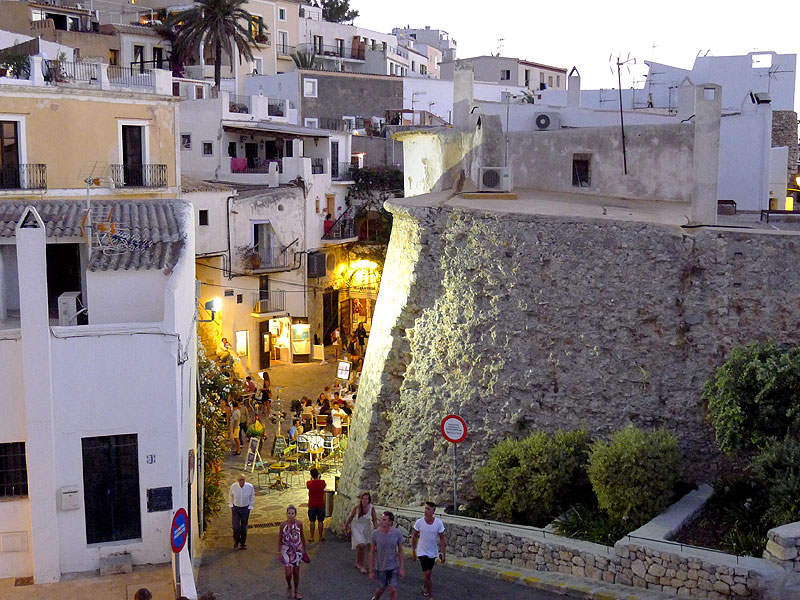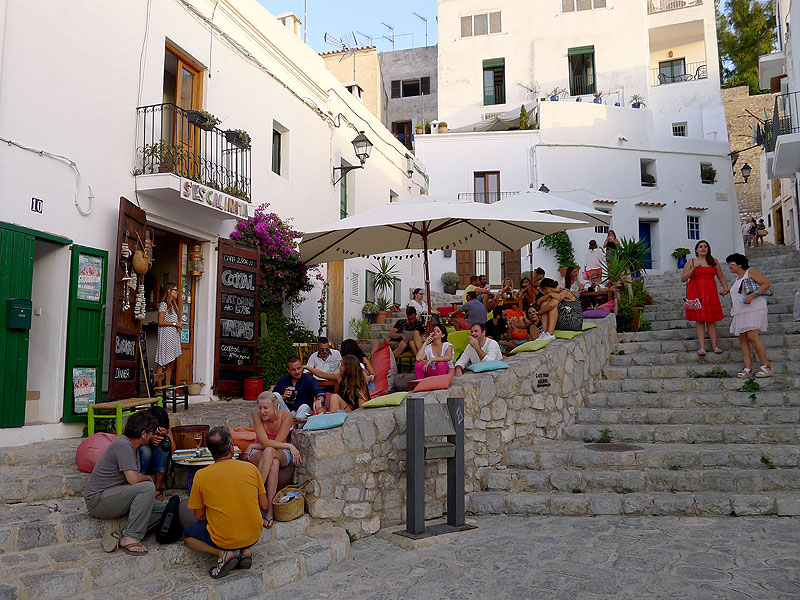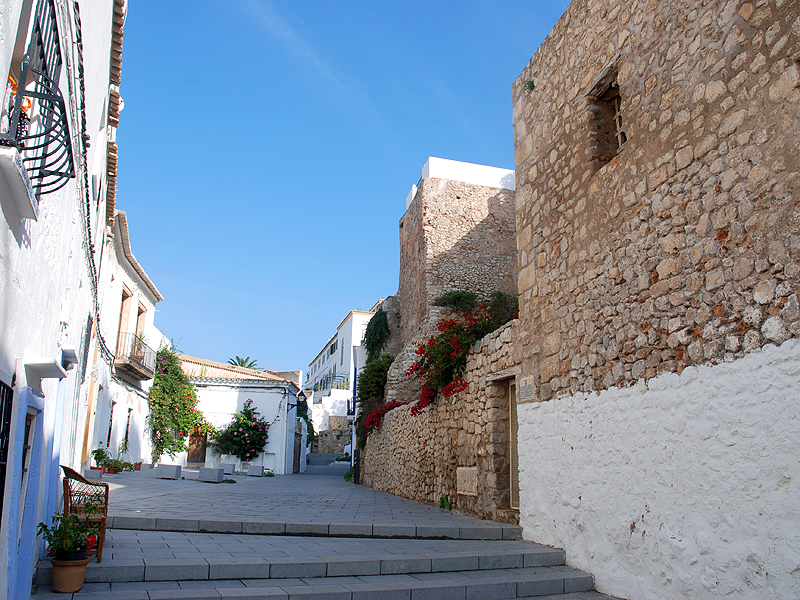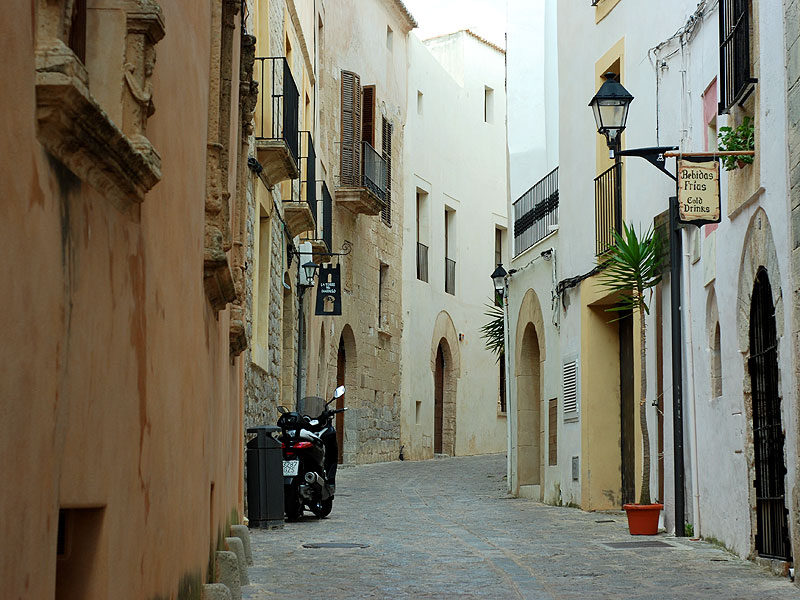The walled city must be explored in two ways. The first, by following the trail of its bulwarks and sections of wall in order to see the vast architectural works that make up the 16th century fortress. It is an open trail that passes above the city, the port and the closest coast. However, it is also essential that you lose yourself in the alleyways and small squares that are dotted around within the walls. The walls follow the anarchic and winding trail typical of a medieval quarter that winds around the slope of a hill, with its passages and steps.
The route starts at the Plaça de Vila, the biggest open area inside the fortified town, after the Portal de Ses Taules and the Portcullis. This square, that is tranquil and solitary in winter, becomes a vibrant and bright space, full of terraces, restaurants, boutiques and art galleries in summer.

On crossing the Plaça de Vila, you can carry on down the narrow alleyways at the bottom, Santa Creu and Sant Antonio, until reaching the Plaça del Sol. From there, you have to go up the long staircase from Carrer des Portal Nou to get to Carrer de Sant Josep. There, you will see two square-based towers from the old medieval wall, which, in spite of looking similar to the buildings, they can be distinguished perfectly.

The street ends up at L’Hospitalet church. From there, go up the other stairway that leads to Carrer de Joan Roman, one of Dalt Vila’s main roads. The old workshop is on the corner. On continuing the ascent, the Sant Cristòfal church-convent can be seen in the background. It is a white-washed building. A little further up, you can see Sant Ciriac Chapel, the Puget Museum – now on Carrer Major -, the medieval gate of Sa Portella and the Madina Yabisa information centre. There are numerous palatial homes belonging to the city’s upper classes along the route. You arrive at the Plaça de la Catedral at the end where, in addition to the temple and its Diocesan Museum, you will find the Casa de la Cúria, the Episcopal Palace, El Salvador Chapel, the old university building and the side of the Castle, with contemporary steps conceived by architect Elías Torres.

For the descent, follow the same path without diverting from the main route when passing by L’Hospitalet and the old workshop. You will then reach Can Botino – currently the mayor’s office – and the Dominican convent, with its lookout that features the reproduction of the tomb of archbishop Guillem de Montgrí, who conquered Ibiza in the 13th century. The final stop, after leaving behind the Santo Domingo church, is in the gardens on Carrer de Sa Carrosa, where another bronze statue sitting on a bench can be found. It is of Isidor Macabich, a parish priest who was the island’s most important historian. The descent concludes in the Plaça de Vila, where the walk started.

